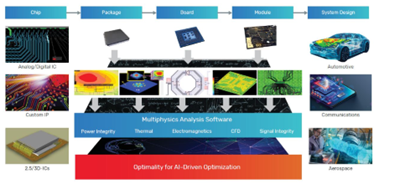Geometric Deep Learning
Geometric deep learning is a specialized area of machine learning that focuses on developing algorithms and models to process and analyze data with a geometric structure, such as graphs, point clouds, and meshes. Geometric deep learning combines deep learning techniques with geometry and topology to enable machines to learn and reason about complex 3D objects and environments. The field of geometric deep learning has a wide range of applications, including computer vision, robotics, engineering simulations, and materials science.
What is the significance of Geometric Deep Learning in CFD?
In recent years, deep learning has gained popularity in the field of scientific computing, particularly in computational fluid dynamics (CFD). CFD is the study of fluid behavior and involves solving complex Navier-Stokes equations. Traditional numerical methods, like mesh-based finite volume or finite element simulations, require significant computational resources due to the complexity of the problems they address. To balance accuracy with computational costs, mesh-based discretization of the computational domain is commonly used. Meshes offer excellent geometric and physical representation capabilities, making them suitable for representations in deep-learning models.
Geometric deep learning is a state-of-the-art machine learning technique that can efficiently learn complex geometric structural representations. This technique has been particularly useful in simulating CFD based on 3D CAD geometries used in the industry. Unlike traditional methods, CAD is learned as a 3D spatial representation of objects without the need for manual parametrization. This novel approach has demonstrated remarkable outcomes in the simulation of intricate engineering problems, opening new avenues for real-time CFD simulation.
How does Geometric Deep Learning work in CFD?
Convolutional Neural Networks (CNNs) are a type of deep learning model that can analyze and process data from non-Euclidian forms or structures. CNNs excel at extracting high-level information from visual inputs such as images and videos. This is achieved through a simple yet powerful operation known as convolution. Convolution involves sliding a small matrix (filter) over an image and performing element-wise multiplication followed by summation to produce another matrix.
Convolutions are highly effective at extracting low-level features from input images, such as edges, shapes, or bright spots, due to the 2-D data structure of images. Additionally, sharing network weights using convolutional filters can extract information regardless of shifts or distortions in the input images or CAD files. This approach represents a significant breakthrough in simplifying complex problems by leveraging the geometry of the input data for CFD simulation.
Geometric Deep Learning with Cadence
Cadence's generative AI portfolio allows customers to enhance their product's performance and increase their design teams' productivity and workflows. As engineers adapt to the increased productivity offered by these platforms, they can focus on more innovative and valuable projects, allowing them to be more creative in their work.
This technology will allow experts to train a single AI/ML model for a family of applications using inputs of geometry and conditions. This technique enables predicting flow field and integral quantities for new configurations but at a significantly reduced cost (orders of magnitude lower). Additionally, experts can improve AI models with a continuous learning process and preserve the knowledge of simulation history to enhance their accuracy and effectiveness.
The Cadence Optimality Intelligent System Explorer is an advanced software solution specifically designed to conduct multiphysics optimization analysis of electronic systems. It utilizes the latest advancements in artificial intelligence (AI) technology to provide fast and precise optimization of complex electronic systems. The Optimality Explorer revolutionizes the conventional design-test-refine loop by replacing it with AI-driven technology that delivers an optimal system design solution with unmatched accuracy and a 10X productivity gain. This advanced system design software is an excellent tool for professionals looking to improve their design process and achieve optimal results.


